Fletch
I'll Lock Up
- Messages
- 8,865
- Location
- Iowa - The Land That Stuff Forgot
Just finished modifying my "old pattern" Eastman A-1 - the one made from steerhide and photographs. (They now do a capeskin model patterned on an original 31-800P contract jacket.)
This was a very oversize 46, possibly MTM for a somewhat apple-bodied gentleman.
The waistline had several inches of slop and crept up constantly thanks to ELC's period-accurate no-elastic knitting.
Here it is on me before the mods, with only one row of elastic sewn into the waistband (not enough!) - and after the mods, which included putting in a second row of elastic.
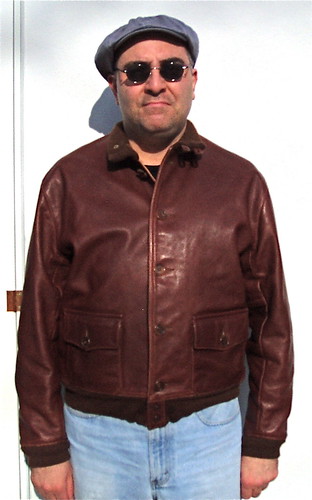
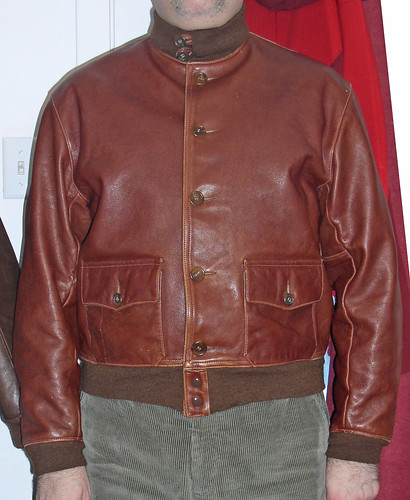
The mods consisted of:
-unstitching the pen slot (I now store pens in between the hide and lining of the pocket)
-sewing a 2nd row of elastic thread into waist knit
-relocating the right-hand (female) snap panel to create a windflap (hardest part! - see below)
-relocating the buttons in line with the snaps
-smaller collar and pocket buttons (large collar buttons tended to crash into each other)
I handsewed everything!
Front of jacket Before
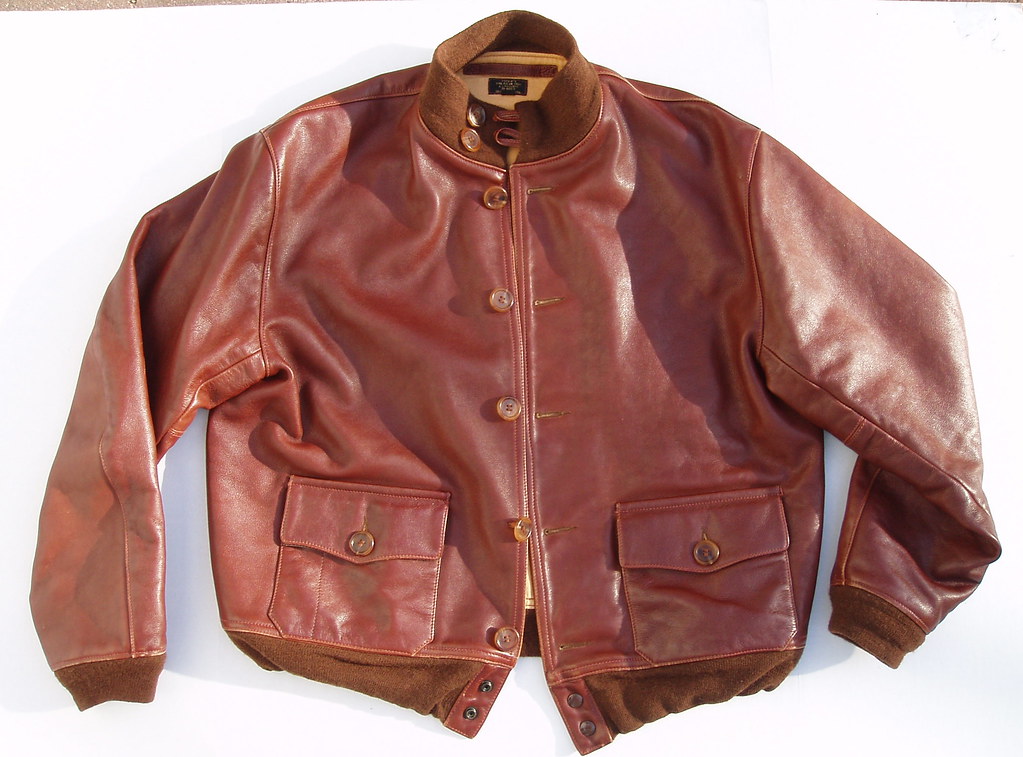
Front of jacket After.
Yes, the buttons left holes. I'm all right with that because now the fit is better and I have a windflap allowance.
I layer under this jacket in the cold, so it's nice to have it not gap so much between the buttons.
I always close at least the waist snaps when wearing it, so the funny corner isn't a big deal to me. Form follows function!
I may move the top body button back. I was concerned it would make the neck fit tight, but it actually throws a slight U shaped crease under the neck.
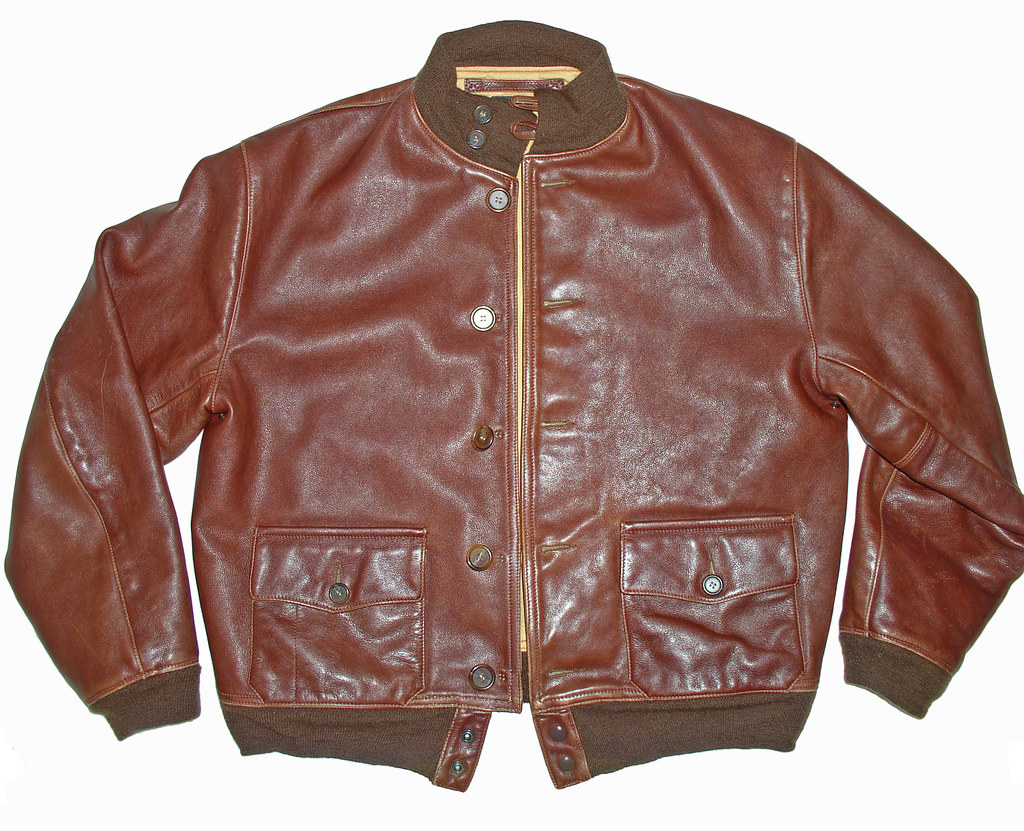
Here's how I moved the snap panel. This was a many-step process:
-undo snap panel from jacket front
-undo waist knit from panel, plus some slack from jacket front
-trim back and resew knit to panel with 1 line of stitching, inside out
-fold that seam in, then sew 2nd line, right side out
-reattach panel to jacket front with 1 line of stitching
-reinforce with 2nd line
I tried to use the existing stitch holes, but that is a hit and miss process - especially when working from the inside, where the holes are a lot smaller and hard to see.
I did every other stitch, then retraced my steps, filling in the gaps on the way back.
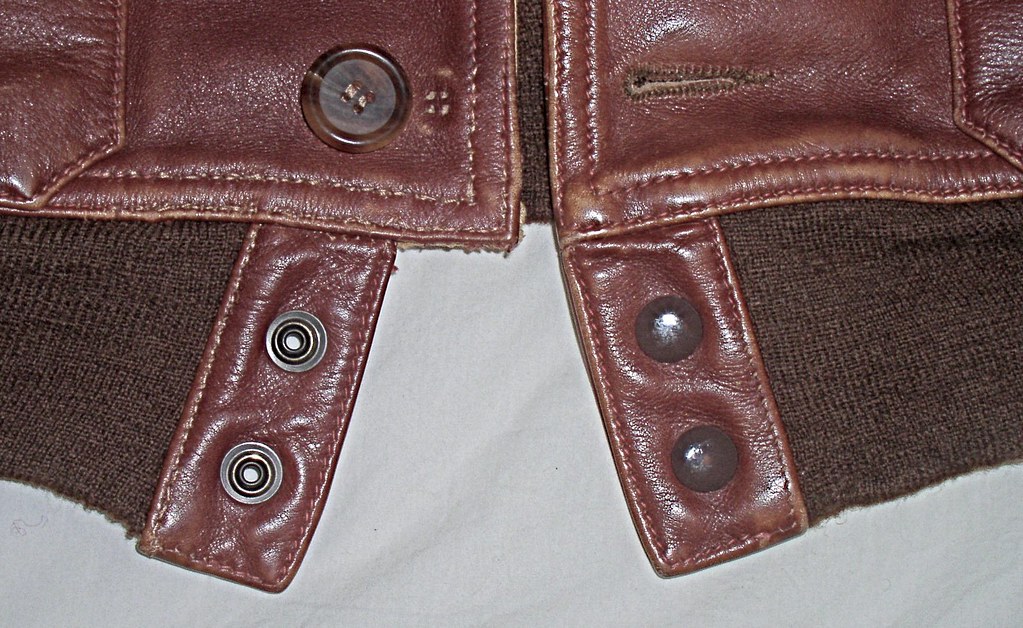
The result looks like what it is - handsewing by a rookie leathercrafter - but it should hold till the knits need replacement one day.
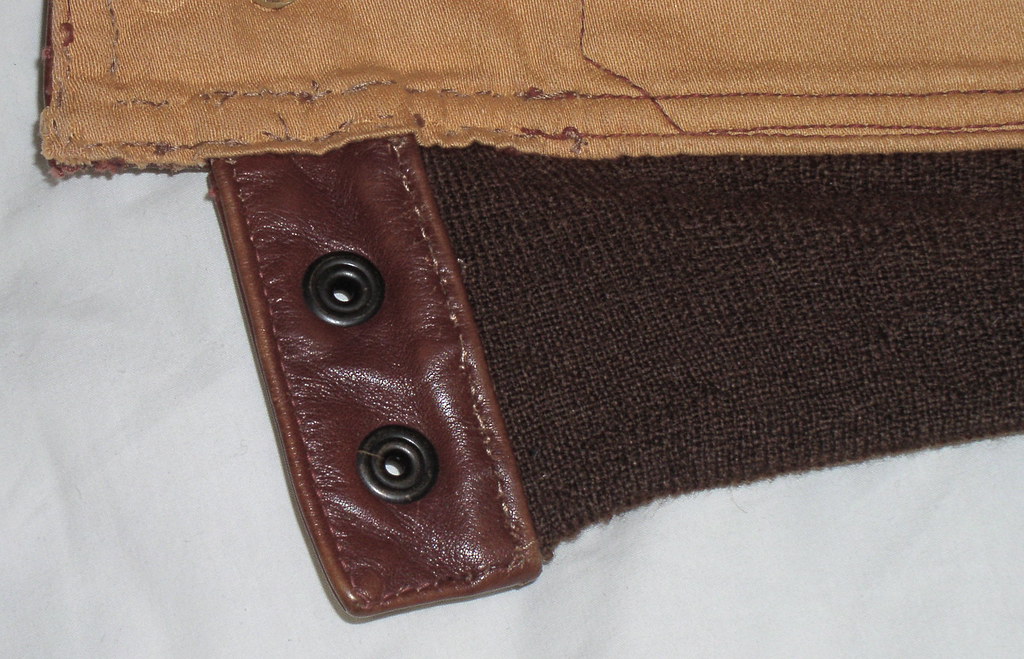
This was a very oversize 46, possibly MTM for a somewhat apple-bodied gentleman.
The waistline had several inches of slop and crept up constantly thanks to ELC's period-accurate no-elastic knitting.
Here it is on me before the mods, with only one row of elastic sewn into the waistband (not enough!) - and after the mods, which included putting in a second row of elastic.


The mods consisted of:
-unstitching the pen slot (I now store pens in between the hide and lining of the pocket)
-sewing a 2nd row of elastic thread into waist knit
-relocating the right-hand (female) snap panel to create a windflap (hardest part! - see below)
-relocating the buttons in line with the snaps
-smaller collar and pocket buttons (large collar buttons tended to crash into each other)
I handsewed everything!
Front of jacket Before

Front of jacket After.
Yes, the buttons left holes. I'm all right with that because now the fit is better and I have a windflap allowance.
I layer under this jacket in the cold, so it's nice to have it not gap so much between the buttons.
I always close at least the waist snaps when wearing it, so the funny corner isn't a big deal to me. Form follows function!
I may move the top body button back. I was concerned it would make the neck fit tight, but it actually throws a slight U shaped crease under the neck.

Here's how I moved the snap panel. This was a many-step process:
-undo snap panel from jacket front
-undo waist knit from panel, plus some slack from jacket front
-trim back and resew knit to panel with 1 line of stitching, inside out
-fold that seam in, then sew 2nd line, right side out
-reattach panel to jacket front with 1 line of stitching
-reinforce with 2nd line
I tried to use the existing stitch holes, but that is a hit and miss process - especially when working from the inside, where the holes are a lot smaller and hard to see.
I did every other stitch, then retraced my steps, filling in the gaps on the way back.

The result looks like what it is - handsewing by a rookie leathercrafter - but it should hold till the knits need replacement one day.



